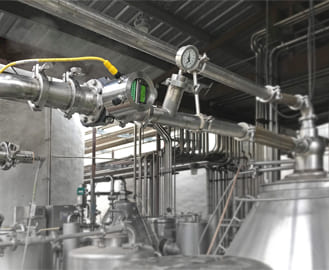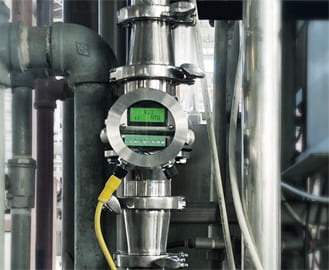Wine clarification with ITM-4
Food & Beverage
How to ensure consistent wine quality and improve process efficiency with turbidity measurement
For the wine consumer, the first quality characteristic, even before the smell and ultimately
the taste, is the visual experience. In addition to color, the clarity of the wine is particularly
important.
To achieve this quality, a California-based wine company installed Anderson-Negele’s
ITM-4 to monitor turbidity in their clarification process prior to bottling.
In both of the following applications, Anderson-Negele was able to help the customer improve its processes, increase its production yields and consistently monitor its product quality specifications.
Customer
Advantages in the application
In both applications in the winery, centrifuge control and filtration monitoring, ITM-4 provided several major benefits compared to the former visual and time base control:
- Consisting product quality due to process automation
- Time savings by eliminating the need for visual filter inspection
- More process reliability due to active and automatic centrifuge drum purge control
- Cost savings thanks to minimal down-times
Application Detail
Application 1: Centrifuge Drum Purge control
Before wine is bottled, it is filtered to remove suspended particles. In a centrifuge application, solid particles in the wine are separated and will accumulate in the centrifuge drum bowl. Once the drum bowl is full of solids, they must be purged to maintain the continuous process and, more importantly, sustain the processor’s wine quality standard.
If the drum bowl is not purged in time, solids will pass through the centrifuge and flow to the packaging line.
If the drum is purged to early, wine, along with the solids, will be pushed to drain, reducing production yield.
The Anderson-Negele solution: ITM-4 turbidity meter
In the centrifuge application, when the drum bowl begins to reach the fill level, wine turbidity at the discharge of the centrifuge will start to rise. This increase in turbidity is easily detected by the ITM-4. With a range of 0 to 5000 NTU, the ITM-4 4–20 mA signal can be scaled to accurately measure product turbidity and signal the PLC when process turbidity setpoints are reached. For this application, the ITM-4 was scaled to monitor turbidity between 30 to 40 NTU.
Application 2: Filtration monitoring
Knowing a wine’s turbidity in Cross-Flow filtration applications enables wineries to confirm equipment performance, specifically by continuously measuring retentate turbidity.
In addition to filtration performance, turbidity meters are used to program the filter backflush program timing and provides an indication of filter capillary straw condition.
During Cross-Flow filtration, the filtrate and permeate are permanently separated, preventing the formation of a filter cake and reducing the need to clean the filter. A thick, hazy wine can quickly block the filters on a machine requiring the filtration process to be immediately stopped to clean the filters.
The Anderson-Negele solution: ITM-4 turbidity meter
The ITM-4 turbidity meter continuously monitors wine filter retentate prior to the packaging stage. Wines bottled for immediate consumption have a clarity requirement of < 1.0 NTU, which is entirely within the specification of the ITM-4. With range settings from 0 to 5000 NTU, the ITM-4 is ideal for low turbidity measurement.
The ITM-4, with its process automation, could eliminate the traditional method of periodically checking the filters, which was very time-consuming.





.png)
Copyright © 2022 Anderson-Negele